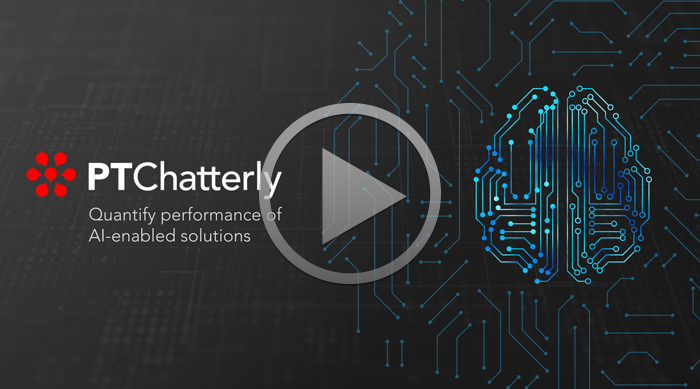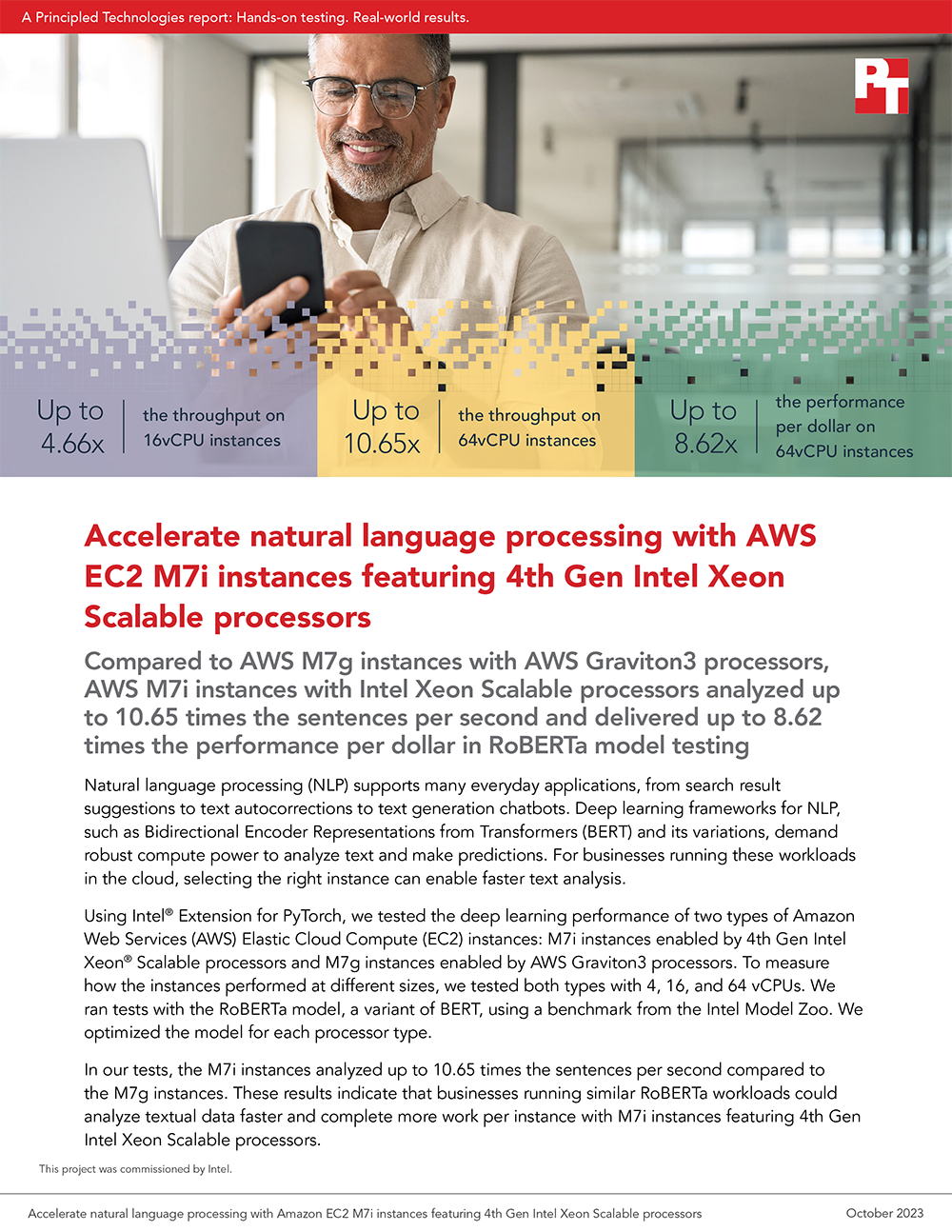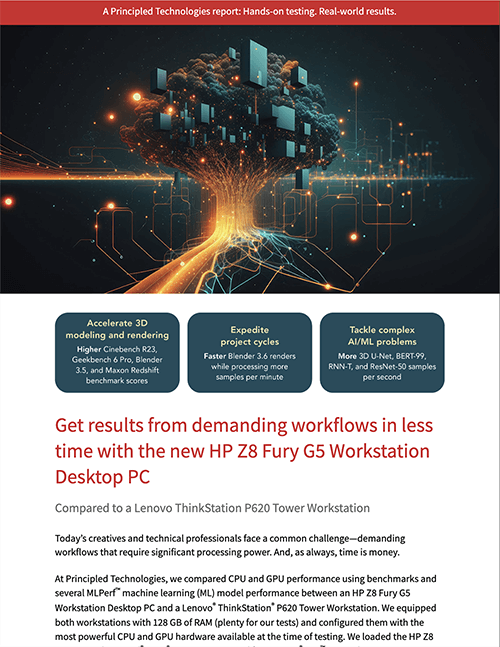
In the past several years, artificial intelligence (AI) has exploded onto the tech scene—and is now top of mind for everyone from consumers to CEOs. Google searches for AI have increased exponentially since the end of 2022, and 79 percent of respondents to an April 2023 McKinsey survey have had some exposure to generative AI (GenAI).1,2 If you’re building or marketing a technology solution this year, it likely has AI capabilities. It may feel challenging, however, to highlight the value of those capabilities in a market saturated with AI-enabled products. You may need hard performance claims, a comparison against a key competitor, an analysis of how your offerings support AI development workflows, or simply a better way to tell your AI story.
We can help.
Enterprise-level AI implementations require powerful computing solutions. Some organizations may choose to keep their AI workloads in data centers on-premises, while others run AI in the cloud. We’re comfortable testing it all. With a wide range of experience that includes the MLPerf suite and other common AI/ML models and frameworks, as well as work in the AI developer journey, we can use hands-on testing to prove your solution’s training and/or inference capabilities on the AI models your audience uses. Recent projects have featured the natural language processing (NLP) model RoBERTa, the image recognition model ResNet-50, and the recommendation model Wide & Deep, among other models.
One key AI use case today is the in-house large language model (LLM). In-house LLMs allow organizations to build AI-assisted chatbots trained on their own private data, opening up new opportunities for innovation and efficiency. To test solutions for this use case, we built PTChatterly.
As a new LLM benchmark and sizing framework, PTChatterly quantifies the performance and user experience your customers can expect from the solution running their in-house LLMs. Utilizing an existing LLM and the retrieval augmented generation (RAG) method, it searches a local corpus of data and constructs responses in AI-assisted chatbot conversations with multiple simulated users. It generates meaningful, real-world metrics, e.g., “32 people can have simultaneous conversations with at worst XX response time.” This tool is exclusively available from PT—and we’re ready to run it on your solution.

AI is also playing an increasingly important role in end-user computing. From students on classroom Chromebooks to data scientists and 3D artists relying on workstations, all of us are putting AI to work. For systems designed for everyday consumers, we can validate AI features and measure performance on lighter AI workloads. And for workstations and devices similarly capable of running compute-intensive workloads, we can highlight support for AI developers or even perform the same hands-on testing that we do with servers. Recent workstation testing has incorporated the image segmentation model 3D U-Net, the speech recognition model RNN-T, and the Topaz Video AI benchmark for video resolution enhancement.
As the landscape continues to shift, however, telling your AI story is about more than performance. Our tech teams bring deep knowledge of the industry and can perform research and competitive analysis on your product and the competition’s, working with our creative team to generate compelling collateral highlighting the advantages we find. We can also generate a proof of concept for key AI features or capabilities of your product; one recent project, for example, saw us building a large language model in the cloud. Or our creative team can work under your brand to tell your AI story, extracting the most relevant details for your specific customer base. (While we cannot highlight all the work we’ve done under our clients’ brands due to NDAs, if you’re reading this, it’s likely that we either have experience with your brand and are ready to do more or could come up to speed quickly.)
If you think we can help you tell your AI story, reach out. Our AI capabilities are as limitless as AI itself.
1. “Google Trends AI,” accessed February 8, 2024, https://trends.google.com/trends/explore?date=today%205-y&geo=US&q=AI&hl=en
2. McKinsey & Company, “The state of AI in 2023: Generative AI’s breakout year,” accessed February 8, 2024,
https://www.mckinsey.com/capabilities/quantumblack/our-insights/the-state-of-ai-in-2023-generative-ais-
breakout-year
Principled Technologies is more than a name: Those two words power all we do. Our principles are our north star, determining the way we work with you, treat our staff, and run our business. And in every area, technologies drive our business, inspire us to innovate, and remind us that new approaches are always possible.











